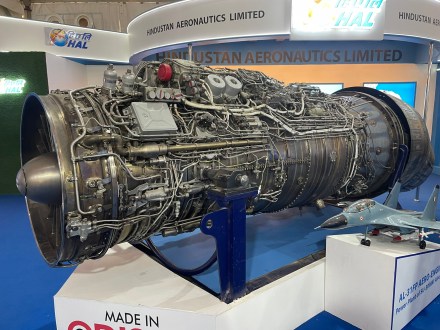As India continues to ramp up its defence capabilities, one major challenge has been delays in the delivery of aero engines for its Light Combat Aircraft (LCA), Tejas.
As reported previously by FinancialExpress.com, the delay has largely been attributed to supply chain issues with General Electric (GE), the US-based engine provider. In light of these delays, sources in the defence and security established have suggested that India should look towards other countries like Russia, which has a well-established aerospace industry, to meet its growing needs for fighter jet engines.
Delays in the Tejas Program
India’s ambitious Tejas Mark-1A program, which aims to deliver indigenously produced fighter jets, has been severely impacted by engine supply delays. Hindustan Aeronautics Limited (HAL), the state-run company responsible for assembling the jets, has been able to deliver only two Tejas jets this fiscal year, far below the planned 18. This has happened because of GE’s inability to fulfill engine orders due to internal supply chain disruptions.
The Indian Air Force (IAF) is already facing a shortage of fighter jets, and this delay is expected to further worsen the gap in the IAF’s fighter squadrons. With current squadron numbers falling short of the required 42, the IAF is in urgent need of more aircraft to counter threats from neighbouring countries.
India-Russia Partnership: AL-31FP Engines
In response to these delays, India has turned to Russia, which has long been a trusted partner in defence. Last year, India and Russia signed an agreement to produce the AL-31FP aero engine locally. These engines are critical for the Su-30MKI, being flown by the IAF. The agreement is seen as an important step toward self-reliance in defence manufacturing and a significant milestone for the Make in India initiative.
In response to queries raised by FinancialExpress.com, a Rosoboronexport spokesperson stated, “The accumulated experience of cooperation and the technological potential of both parties makes it possible for India and Russia to implement projects to equip with power plants existing and future aircraft of Indian design.” This joint project, which focuses on local production, reflects both countries’ efforts to modernize India’s aerospace capabilities and reduce dependency on foreign suppliers.
UEC Engines & India
Russia has a strong track record in producing engines for a wide range of military aircraft. United Engine Corporation (UEC), a key player in Russia’s aerospace industry, is at the forefront of this collaboration. At the Aero India 2025 airshow, UEC displayed several new innovations, including the fifth-generation 177S fighter engine, which is designed to replace older models like the AL-31FP. The new 177S engine promises to deliver higher thrust while maintaining similar dimensions and better fuel efficiency.
According to sources in the defence and security establishment, “India could benefit from these advancements as it looks to modernize its fighter jet fleet. The 177S engine, which has a service life of 6,000 hours and offers lower operating costs, could play a crucial role in meeting the IAF’s long-term needs.”
“UEC, as part of the Rostec State Corporation, is expanding its range of aviation engines for modern aircraft and helicopters, creating new power plants to meet customer requirements. The 177S engine is classified as a fifth-generation engine and can be installed on both previous and new-generation aircraft without any design modifications. The new VK-650V turboshaft engine can be used on both Russian and foreign light helicopters. We have already received the type certificate confirming that the engine is ready for serial production,” said Mikhail Remizov, UEC Deputy General Director for Strategy, Program-Project Management and Organisational Development.
For the first time the Russian company UEC displayed the VK-650V turboshaft engine, which has received the Type Certificate in Russia and is ready for series production. The engine is designed to power Russian helicopters like the Ansat and Ka-226T. The engine’s design allows it to be used on other helicopters and future airborne platforms.
The AL-55E engine for trainer aircraft especially developed by UEC for the Indian HJT-36 trainer has several advantages, in particular its modular design, which simplifies maintenance and repair and reduces operational costs.
Deals Between India and Russia
The AL-31FP engine deal is just one of several high-profile defence agreements signed between India and Russia in recent months. In addition to the AL-31FP contract, India also secured deals for the procurement of AK-203 rifles and Mango shells. These agreements are part of a broader push by India to strengthen its defence capabilities through partnerships that foster technology transfer and boost local manufacturing.
